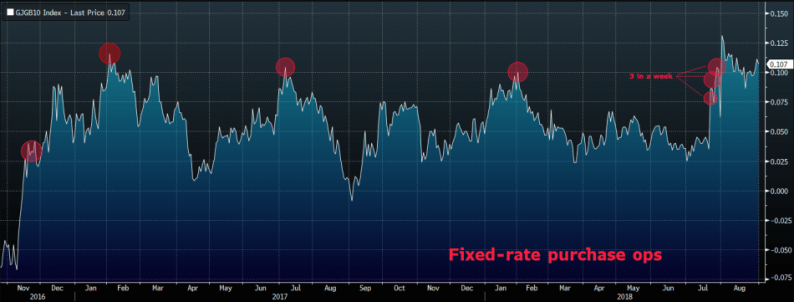On Friday, the Bank of Japan tweaked their bond buying program for September. Although they upped the purchase sizes across maturities, they reduced the frequency of purchase operations from five to six.
Going into July, the market was conditioned to view BoJ meetings as snoozers given that Japan is still miles away when it comes to bringing inflation up to target. Five years into ultra accommodative policy and they’re not even halfway there.
But the deleterious side effects of easing are showing up in bank margins and JGB liquidity and some folks are concerned about the long-term implications of the bank’s ETF program for the Japanese equity market. So, caught between a rock and hard place, the BoJ attempted to tweak policy at its July meeting.
The July 31 announcement came after two weeks of volatility in the normally sleepy JGB market. On July 22, 10Y JGB yields exploded higher in response to a JiJi newswire story that tipped a possible change in the BoJ’s thinking on yield curve control. The bond selloff forced the BoJ to step in with three fixed-rate operations in the week ahead of the policy meeting as yields continued to bump up against 0.11% in anticipation of possible tweaks. The frequency of those ops was unprecedented:

(Bloomberg)
That episode highlighted the dilemma facing the central bank. The market is so thin that even the perception that small tweaks are in the cards has the potential to catalyze outsized moves. Perhaps more worrying, subtle shifts in policymaker rhetoric this year have been met with sharp rallies in the yen. That latter point is key. Yen appreciation undermines the inflation targeting effort and the currency’s safe haven status means it’s prone to rallying during bouts of risk-off sentiment. Additionally, political turmoil in Japan is a catalyst for yen appreciation given that any threat to Abe is seen as a threat to his namesake economic strategy.












Leave A Comment